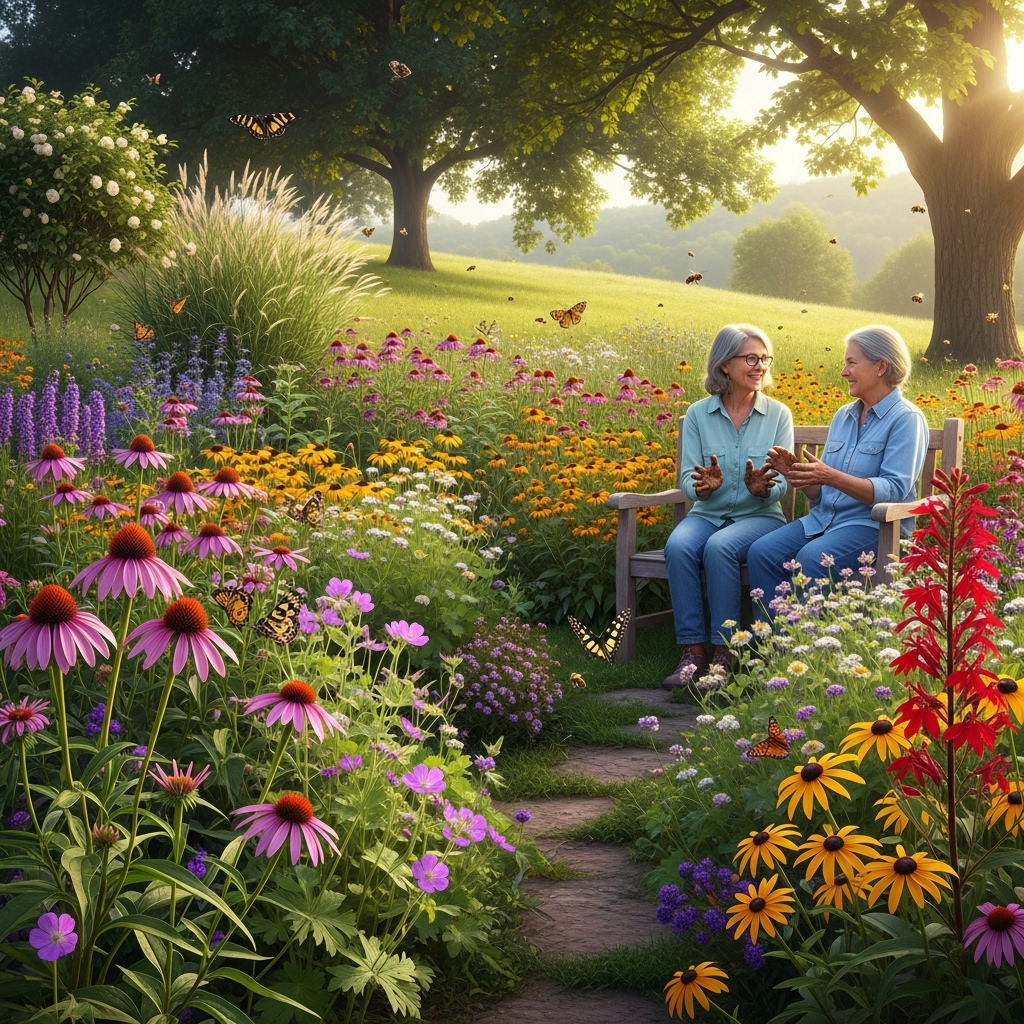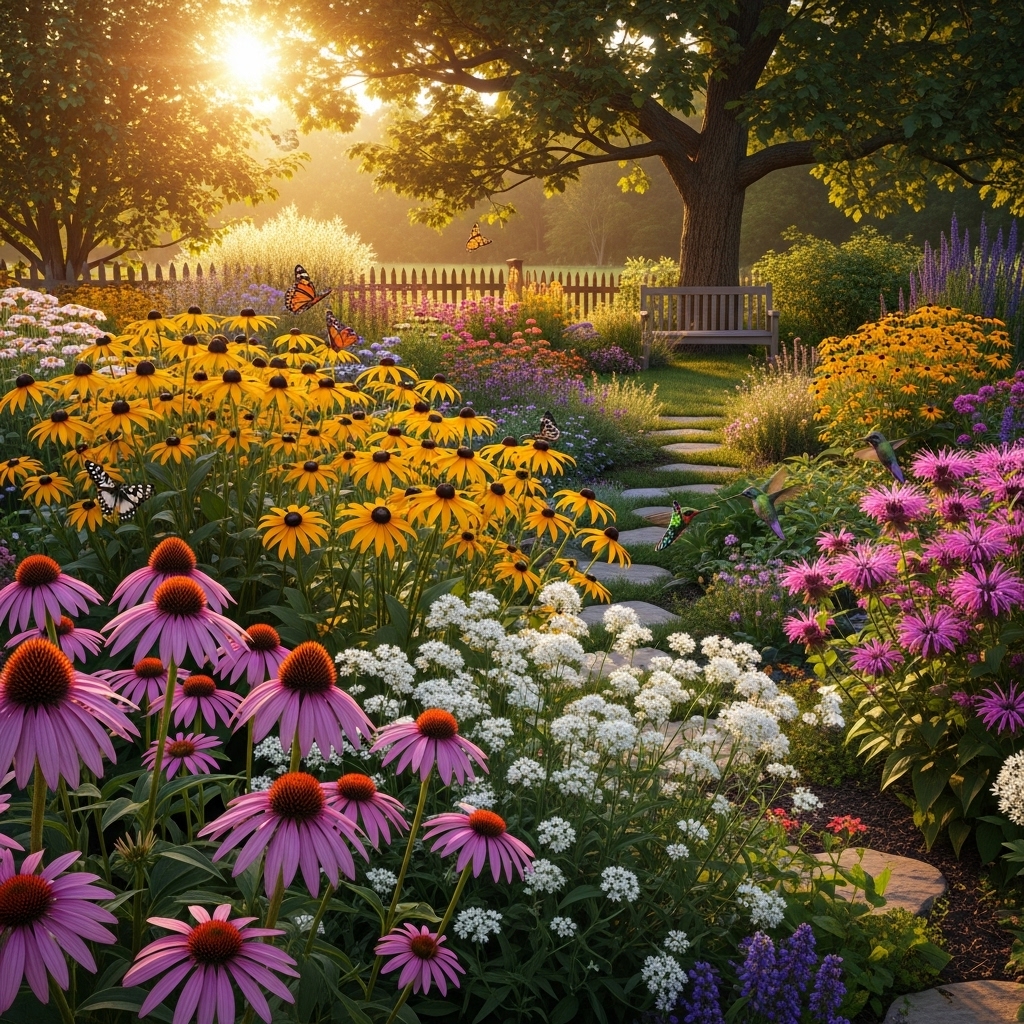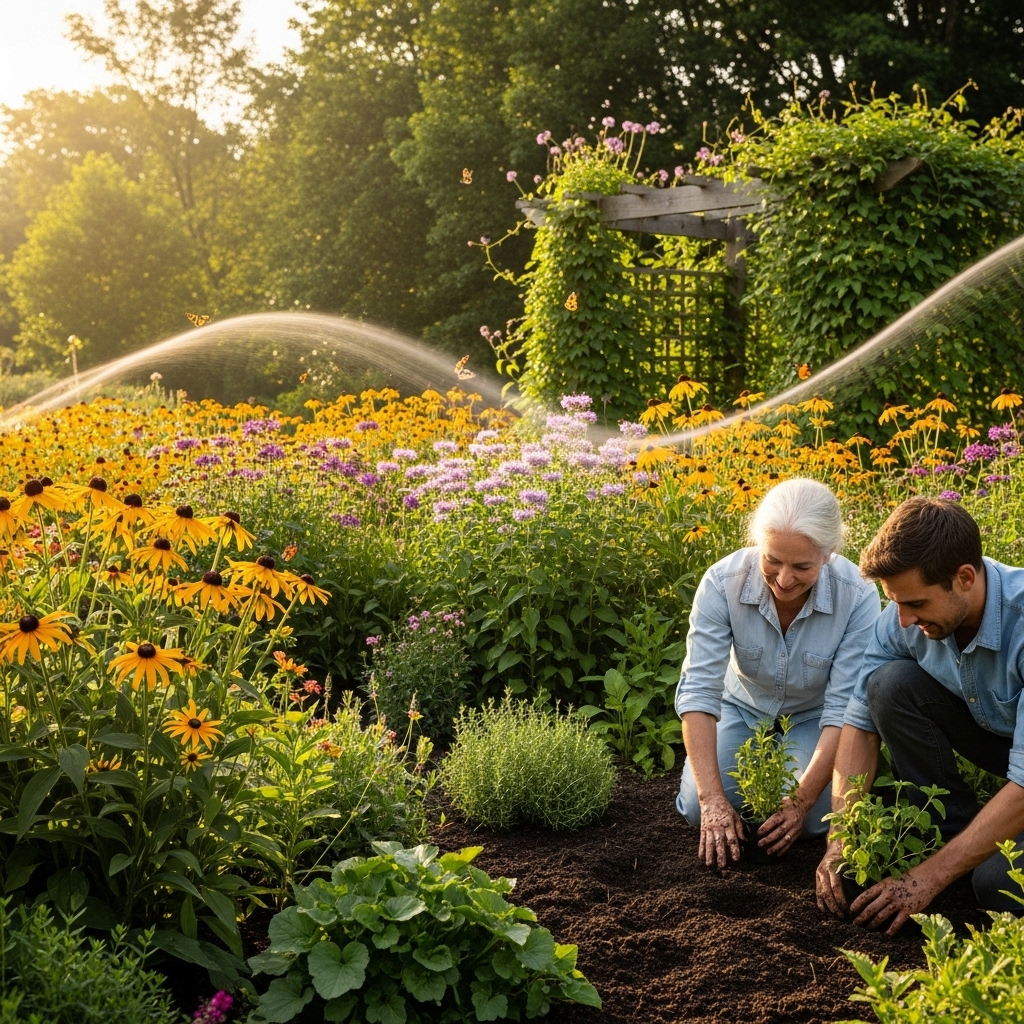Creating a thriving garden in Pennsylvania starts with embracing the beauty and resilience of native plants. These species not only enhance the landscape but also support local wildlife and ecosystems, making them essential for sustainable gardening.
Why Choose Native Plants for Your Pennsylvania Garden?

As I embarked on my gardening journey, I discovered that native plants are the cornerstone of a successful garden in Pennsylvania. I was fascinated by how these plants have adapted to the local climate and soil conditions, making them easier to maintain and more resilient to pests and diseases. By choosing native species, I was not only enhancing the beauty of my garden but also contributing to the local ecosystem.
Benefits of Native Plants
One of the first benefits I noticed was how much less water and fertilizer native plants required compared to non-native species. This made my gardening experience more sustainable and budget-friendly. Additionally, native plants help maintain biodiversity, providing habitats and food sources for birds, butterflies, and beneficial insects. I found myself enjoying the vibrant colors and unique shapes of these plants while watching the wildlife they attracted flourish in my garden.
An Easy Way to Support Local Wildlife
Choosing native plants is more than just an aesthetic choice; it has a direct impact on wildlife. I remember the first time I saw a Monarch butterfly resting on my native milkweed. It was a magical moment that reminded me of the importance of creating spaces for these creatures. Native plants serve as host plants for caterpillars and nectar sources for adult butterflies, attracting pollinators that are vital for a healthy ecosystem.
Top 10 Native Plants for Your Pennsylvania Garden

Now that I have shared my passion for native plants, I am excited to dive into the top 10 native plants that I believe are must-haves for any Pennsylvania garden. Each of these plants has its own unique characteristics and benefits, making them perfect additions to your landscape.
1. Eastern Red Columbine (Aquilegia canadensis)
The Eastern Red Columbine quickly became one of my favorites due to its stunning red and yellow flowers that attract hummingbirds. This perennial thrives in partial shade and well-drained soil. I noticed that it blooms in late spring, adding a splash of color to my garden right when I needed it most. Plus, it’s a great option for woodland gardens!
2. Pennsylvania Sedge (Carex pensylvanica)
If you’re looking for a low-maintenance ground cover, Pennsylvania Sedge is an excellent choice. I’ve planted it in shady areas, and it has thrived beautifully. Its fine-textured leaves create a lush green carpet that brightens up my garden. This plant also provides shelter for small wildlife and is tolerant of drought conditions once established.
3. Wild Bergamot (Monarda fistulosa)
Wild Bergamot is another standout in my garden. Its lavender blooms are not only eye-catching but also attract a plethora of pollinators, including bees and butterflies. I found that this plant thrives in sunny spots and can tolerate various soil types, making it a versatile addition. Plus, the aromatic leaves can be used to brew tea!
4. Black-eyed Susan (Rudbeckia hirta)
Black-eyed Susans are a classic choice for any garden, and I love their cheerful yellow petals with dark centers. They are incredibly hardy and bloom from mid-summer to early fall, providing a long-lasting display of color. I appreciate how they self-seed, ensuring that they come back year after year without much effort on my part.
5. Butterfly Weed (Asclepias tuberosa)
This vibrant orange perennial is not just a visual delight; it’s a critical food source for Monarch larvae. I love planting Butterfly Weed in sunny spots, where it thrives in well-drained soil. Its deep roots make it drought-resistant, and the flowers attract a variety of pollinators, transforming my garden into a lively habitat.
6. American Elderberry (Sambucus canadensis)
American Elderberry is a versatile shrub that I have found to be both functional and beautiful. Its white flowers attract pollinators, while the berries provide food for birds. I’ve enjoyed making elderberry syrup from the berries, which adds a delicious touch to my pantry. This shrub thrives in moist, well-drained soil and can grow in full sun or partial shade.
7. New England Aster (Aster novae-angliae)
The New England Aster is a true showstopper in the fall. Its stunning purple flowers are a magnet for butterflies and bees. I’ve planted it in clusters, creating a breathtaking display that brightens up my garden as summer transitions into fall. This perennial is adaptable and thrives in a variety of soil conditions, making it a must-have.
8. Virginia Bluebells (Mertensia virginica)
Virginia Bluebells are one of the first plants to bloom in spring, and their delicate blue flowers create a stunning contrast against the emerging green foliage. I love how they thrive in moist, shaded areas, making them perfect for woodland gardens. Their ephemeral nature reminds me of the fleeting beauty of spring.
9. Wild Lupine (Lupinus perennis)
Wild Lupine is not only beautiful with its spikes of blue flowers, but it also serves as a host plant for the endangered Karner Blue butterfly. I was thrilled to plant these in my garden, knowing I was doing my part to support a rare species. They prefer sandy, well-drained soil and full sun, thriving in a variety of garden settings.
10. Spicebush (Lindera benzoin)
Lastly, I recommend Spicebush for its aromatic leaves and berries that provide food for birds. I planted it in a shady corner of my garden, where it thrives and adds an interesting texture. Plus, its early spring blooms are a lovely sight and an important nectar source for early pollinators.
With these ten native plants, I’ve transformed my Pennsylvania garden into a vibrant, wildlife-friendly haven. Each plant not only adds beauty but also supports the local ecosystem, making gardening a fulfilling experience. I can’t wait to share more tips and insights in the next part of this article!
Designing Your Native Plant Garden

As I began to integrate these native plants into my garden, I quickly realized that the design aspect is just as important as the plant selection. Creating a visually appealing landscape while supporting biodiversity involves thoughtful planning and a little creativity. I found that by considering the layout of my garden, I could enhance its overall aesthetic while ensuring it thrives.
Understanding Your Space
Before I started planting, I took the time to understand my garden space. I measured the areas where I wanted to plant, noted the sunlight patterns, and assessed the soil quality. This step was crucial, as it helped me determine which plants would thrive in specific locations. For instance, I placed my Wild Bergamot and Butterfly Weed in the sunniest spots, while my Virginia Bluebells and Pennsylvania Sedge found a comfortable home in the shadier areas.
Creating Layers in Your Planting Design
One of the techniques I found particularly effective was layering plants. By varying the heights of the plants, I created visual interest and ensured that each species could shine. I planted taller varieties like the New England Aster towards the back of my beds and shorter plants like the Eastern Red Columbine in the front. This not only maximized the visibility of each plant but also created a sense of depth in my garden.
Additionally, I discovered the importance of creating a natural flow through the garden. I aimed for a design that felt organic rather than rigid. By grouping plants with similar water and sunlight needs, I was able to create harmonious sections while minimizing maintenance. I often found myself experimenting with different arrangements until I felt the layout felt balanced and inviting.
Incorporating Hardscape Elements
As I designed my garden, I also thought about incorporating hardscape elements. Features like paths, benches, and decorative stones can enhance the overall experience of the garden. I added a small stone pathway that meanders through the beds, allowing me to easily access each plant without compacting the soil. This pathway not only serves a functional purpose but also invites visitors to explore the beauty of the garden.
Creating Wildlife Habitats
Another aspect I considered was the creation of wildlife habitats. I learned that providing shelter and nesting sites can significantly benefit local wildlife. I incorporated logs, stones, and brush piles in different areas of my garden, creating natural habitats for small animals and beneficial insects. I also made sure to leave some areas a bit wild, allowing for native grasses and wildflowers to flourish, providing additional food and shelter for pollinators.
Seasonal Interest
When planning my garden, I made a conscious effort to include plants that bloom at different times throughout the growing season. This strategy ensures that my garden remains vibrant and lively all year long. For example, while my Virginia Bluebells create a stunning spring display, my Black-eyed Susans keep the color alive throughout the summer and into the fall. I found that this diversity not only looks beautiful but also supports a wider range of wildlife throughout the seasons.
Maintenance Considerations
While native plants are generally low-maintenance, I realized that some care is still necessary to ensure they continue to thrive. Regularly checking for pests and diseases became part of my gardening routine, but I was pleased to find that the resilient nature of native plants often meant fewer issues. I also learned that proper mulching can help retain moisture and suppress weeds, making my maintenance tasks easier.
In terms of watering, I discovered that deep watering techniques encourage deeper root growth, leading to healthier plants. I’ve adopted a system of watering less frequently but more deeply, which has contributed to the overall resilience of my garden. Plus, observing how these plants respond to the changing seasons has been an educational experience, allowing me to adjust my gardening practices accordingly.
Engaging with the Community
As my garden flourished, I felt inspired to engage with my local community. I joined a gardening club, where I could share my experiences and learn from others who are passionate about native gardening. Participating in local plant swaps and community events not only expanded my knowledge but also connected me with like-minded individuals who share my values of sustainability and biodiversity.
Through these connections, I discovered even more native plant varieties to consider, as well as innovative gardening techniques that I could implement in my own garden. I realized that my journey is not just about creating a beautiful space but also about fostering community and sharing knowledge.
Final Thoughts
Transforming my Pennsylvania garden with native plants has been an enriching journey. From design to maintenance, every step has deepened my appreciation for the natural world and the importance of supporting local ecosystems. I encourage anyone looking to enhance their garden to consider native plants, as they not only beautify our spaces but also provide invaluable benefits to wildlife and the environment.
